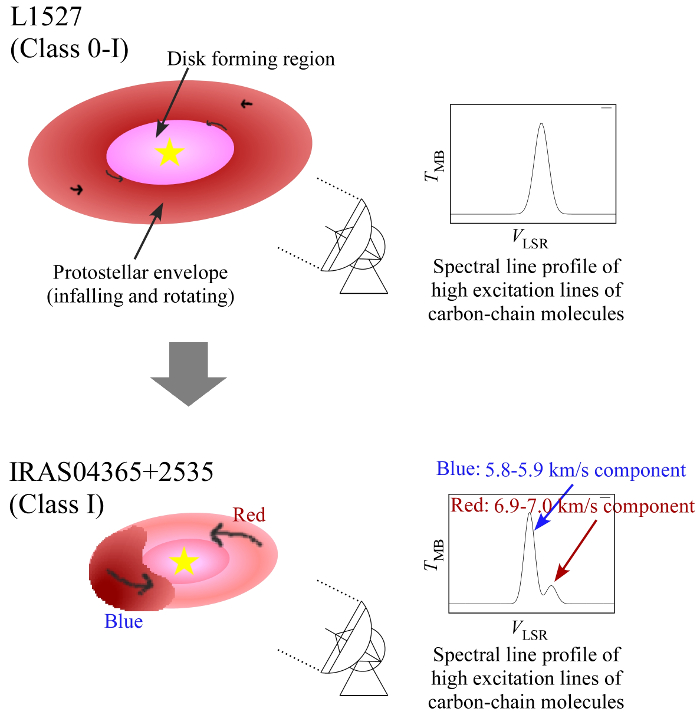
|
EPoS |
|
EPoS Contribution
|
|
Chemical Diversity and its Evolution from Class 0 to Class I
Nami Sakai The University of Tokyo, Tokyo, Japan | |
| During the last decade, chemical compositions of low-mass star-forming regions have been investigated extensively. They show significant diversity even among sources in a similar physical evolutionary stage (i.e. Class 0 sources). One distinct case is the hot corino chemistry characterized by rich existence of 'saturated' complex organic molecules (COMs) such as HCOOCH3 and C2H5CN, whereas the other is the warm carbon-chain chemistry (WCCC) characterized by extraordinary richness of 'unsaturated' complex organic molecules such as carbon-chain molecules. We have proposed that the origin of the diversity would be the different duration time of the starless core phase of each case. Then, an apparent question is whether the diversity is seen in more evolved (i.e.Class I and II) stages. Although the relation between hot corinos and protostellar disks is still unknown, saturated COMs are acturally distributed within a few 100 AU region around the protostar. On the other hand, carbon-chain molecules also exist in the closest vicinity of the protostar (< 500 AU) in the WCCC sources. Thus, the chemical variation should be delivered to the protoplanetary disks. Its detailed processes are needed to be clarified. With this motivation, we have extensively searched for Class I sources showing the WCCC feature, and have finally found a potential candidate. It is IRAS04365+2535 in TMC-1A. Strong high excitation lines of carbon-chain molecules with a peculiar velocity structure have been found toward this source. The lines appear at 5.9 km/s, which is different from the systemic velocity of the parent cloud core (6.4 km/s). The lines show central condensation around the protostar, and can better be seen in higher excitation lines. With the interferometric observation of 13CO(J=1-0), Brown and Chandler (1999) detected a double-peaked spectrum (5.9 and 7.0 km/s) which can be interpreted as the Keplarian disk. Hence, it is most likely that the carbon-chain emissions comes from a part of the disk due to chemical inhomogeneity, which would be a remnant of the warm carbon-chain chemistry (WCCC). In the presentation, I will discuss the evolution of the WCCC sources from Class 0 to Class I, hopefully with the ALMA cycle 0 data. | |
 | |
| Caption: Schematic illustration of the structure of the WCCC sources, L1527(Class 0) and IRAS04365+2535 (Class I). | |
| Collaborators: T. Sakai, The University of Tokyo, Japan S. Yamamoto, The University of Tokyo, Japan |
Key publication
|